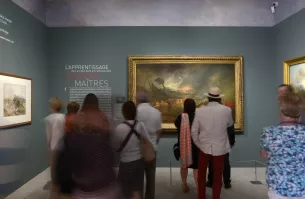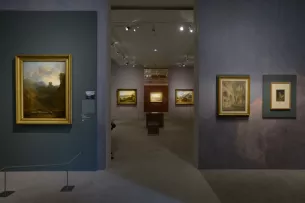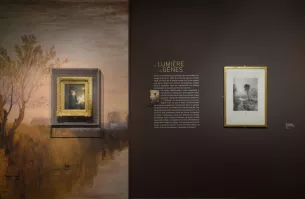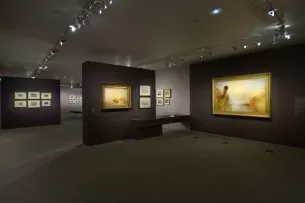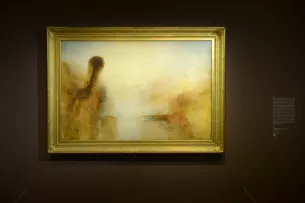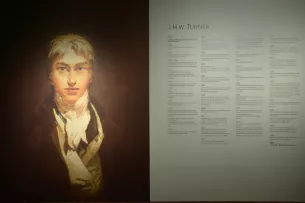EXHIBITION
Turner and colour
The exhibition was organized in partnership with the Turner Contemporary of Margate (England).
With its emphasis on colour—the very essence of Turner’s creation—the exhibition invites visitors to rediscover the life and work of this great artist from a perspective that had gone unexplored in most of the major retrospectives devoted to the artist to date. In an exhibit organized by chronology, theme and geography, you can follow the evolutions in Turner’s palette.
The first canvases and watercolours show how the young self-taught painter explored the work of the great colourists of the past, from Rembrandt to Poussin and from Titian to Claude Lorrain, before perfecting a uniquely personal technique thanks to his keen observation of natural phenomena and their endless chromatic variations, painted from life, in the open air.
Turner’s interest for scientific and philosophical theories on colour, from Newton to Goethe, is evident in this room, as well as his avant-gardist use of pigments and unusual techniques. While his bold experimentation resulted in harsh criticism from his contemporaries, it also earned him the admiration of some of the greatest art connoisseurs of the time.
A large section of the exhibition is devoted to the artist’s travels throughout Europe and illustrates the variety and lyricism of his golden sunsets, his seascapes in hues of blue, and the remarkable landscapes that are typical of his oeuvre.
From the delicate tones that colour the sketches executed during his travels to the powerful hues that fill some of the most famous of his later canvases, colour in Turner’s work reveals, from room to room of the exhibition space, the public and private face of this controversial artist, who was at once a mysterious figure and an adventure-loving explorer. You will be struck by the qualities of this prodigious colourist and talented connoisseur of the visual and emotional effects of colour, to the extent that Claude Monet once described him as knowing ‘how to paint with his eyes open’. The major impact of his oeuvre on later generations of artists cannot be contested and indeed would have an influence, some decades later, on the Impressionist movement.
Focusing on the painter’s widespread travels, part of the exhibition however is also devoted to the time Turner spent in Margate, on the Kent coast in England. Towards the end of his life, Turner would spend much time in this small coastal village, attracted by the unique quality of its light. In Margate, Turner created some of his most beautiful pictorial experiments, and it is here that the exhibition can be seen from 8 October 2016 to 8 January 2017 at the Turner Contemporary.

